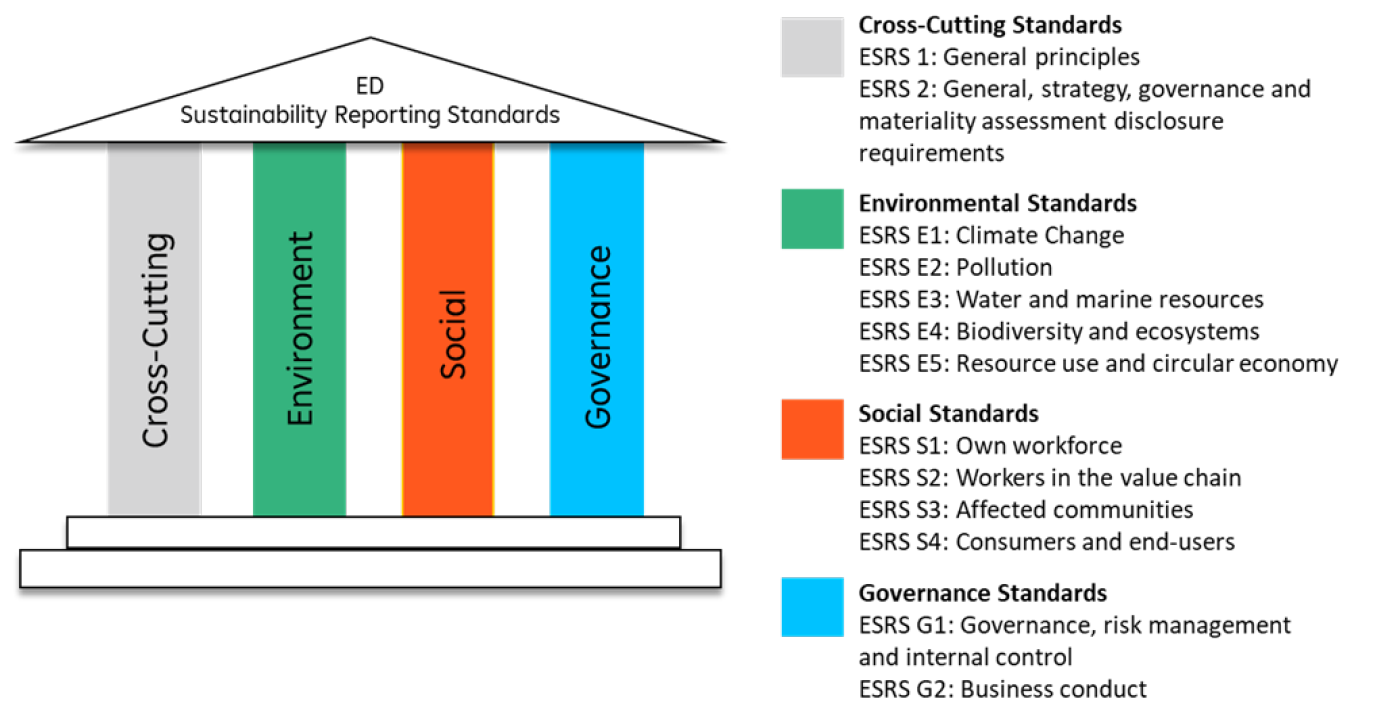
GRI's submission to EFRAG's public consultation on the first set of draft ESRS
For reporters to better understand their current reporting efforts, the Global
Reporting Initiative (GRI) published a document mapping the ESRS against the GRI Standards during the public consultation phase of the European
Sustainability Reporting Standards (ESRS) Draft. Furthermore, this document
contains a technical response to each exposure draft, comparing co-related
standards and providing feedback.
The following topics were touched upon:
1. Double materialityThe GRI welcomes and supports the use of double materiality but recommends aligning with the International Sustainability Standards Board (ISSB) when it comes to financial materiality. Moreover, it recommends further review of the notion that all mandatory disclosure requirements should be considered material.
2. Alignment
ESRS is largely aligned with GRI Standards, but there is still room for greater convergence and alignment. Enhanced alignment will not only reduce reporting burdens, but it will also achieve consistency in sustainability reporting globally and reduce confusion among reporters. While the alignment with key authoritative intergovernmental instruments such as the UN Guiding Principles and the OECD Guidelines is appreciated, there is still room for greater alignment and convergence.
3. Level of detail and granularity
The GRI expresses concern about the level of detail and granularity of the draft ESRS. The draft ESRS take many of the recommended and optional reporting elements described in the GRI Standards and introduce them as mandatory requirements. As a result of mandating concepts that aren't widely adopted, draft ESRS often expand beyond the scope of the GRI Standards. Consequently with a level of such detail and granularity, even the most experienced reporters will have difficulty meeting said standards, as well as significantly raising the costs of such reporting. This situation is further worsened by the ambitious timeline proposed by the European Commission (EC) since it doesn’t leave enough time for organizations to put the appropriate measures into place. An application of the ESRS becomes unrealistic and impractical when data is unavailable or incomplete. Therefore, GRI recommends a more reasonable timeline, giving organizations sufficient time to implement the ESRS.
4. Architecture of ESRS
In line with GRI's approach, GRI welcomes the overall architecture of cross-cutting, topical, and sector standards. Another welcomed addition are topics that are not yet covered y the GRI such as working hours, work stoppages or beneficial ownership. However, a concern is the complex internal structure, as well as the duplication of content existing between some cross-cutting and topical standards Furthermore, there is some unnecessary duplication across topical standards, in particular the social standards.
5. Standards
The GRI highlight the importance of clarifying the relationship between key concepts like materiality, relevance, significance, matters, topics, subtopics, sub-subtopics, and impacts/risks/opportunities. Even though each of these phrases has a unique meaning and definition, the suggested structure is complicated and many of them are used interchangeably, therefore GRI simplification by alignment with existing practice. Since al lot of ESRS are interrelated, some of the necessary data may be shared among them. Therefore, the GRI suggest revising these standards to remove repetition of information and to clearly state at the beginning of each standard the precise scope of the standard.
The consultation period ended on the 8th of August 2022.

For inquiries please contact:
regulatory-advisory@rbinternational.com
RBI Regulatory Advisory
Raiffeisen Bank International AG | Member of RBI Group | Am Stadtpark 9, 1030 Vienna, Austria | Tel: +43 1 71707 - 5923